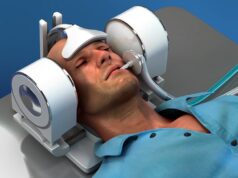DaTscan (GE Healthcare) is the first FDA-approved radiopharmaceutical adjunct imaging agent to help physicians evaluate patients with suspected parkinsonian syndromes, such as Parkinson’s disease.
GE Healthcare announced the availability of DaTscan (Ioflupane I 123 Injection), in more than 80 hospitals across the US. DaTscan is the first FDA-approved radiopharmaceutical adjunct imaging agent to help physicians evaluate patients with suspected parkinsonian syndromes, such as Parkinson’s disease. It gives physicians diagnostic capability that may lead to timely, appropriate treatments for suspected parkinsonian syndrome patients.
“This is a major advance in the diagnostic imaging space. GE Healthcare personnel are working extremely closely with hospitals to ensure that these institutions have the proper facilities to handle and use DaTscan and that physicians are trained properly,” said Donald J Quinn, vice president and general manager, GE Healthcare Medical Diagnostics.
DaTscan is a drug enforcement administration (DEA) schedule II controlled substance. Hospitals and nuclear imaging centres that administer DaTscan must have infrastructure dedicated to quality control, handling and dispensing of DEA schedule II, radioactive drugs used for diagnosis and treatment.
“We have a thorough process in place to provide institutions with assistance in DEA-controlled substance registration, imaging equipment set-up, and personnel training for radioactive drug handling and patient imaging protocols,” said Quinn.
Fifty thousand to sixty thousand new cases of Parkinson’s disease are diagnosed in the US each year, but an accurate diagnosis can take up to six years. Many people mistakenly attribute the first symptoms of parkinsonian syndromes, such as Parkinson’s disease, to the normal aging process, and many have misconceptions about diagnosis. A recent survey by the National Parkinson Foundation found that 33% of Americans believe that a blood test can detect Parkinson’s disease, while 30% did not know. Although doctors can run blood tests to help diagnose a number of conditions, they cannot diagnose Parkinson’s disease based on the results of a blood test. Despite the unavailability of a simple test, DaTscan may be used as an adjunct to other clinical evaluations to assist in differentiating parkinsonian syndromes from conditions with similar symptoms, like essential tremor, in patients with suspected Parkinson’s disease. DaTscan was not designed to differentiate between different forms of parkinsonian syndromes.
“A timely and correct diagnosis may help patients and their families overcome the fears and frustrations associated with the process of getting an accurate diagnosis so they can move on with their lives,” said Joyce Oberdorf, president and CEO, National Parkinson Foundation. “This new, innovative imaging agent is a big step in the right direction to be able to provide people with the right treatment and appropriate disease management.”
According to the World Health Organization, up to 25% of neurodegenerative movement disorders are misdiagnose. Movement disorders are primarily diagnosed through clinical examination. Clinical exams alone, particularly early in the disease, are often inconclusive and can result in misdiagnosis. Movement disorders often have similar symptoms and the treatments can vary significantly. Inappropriate treatment can adversely affect patients’ quality of life. DaTscan is an additional diagnostic imaging tool that may help expedite an accurate diagnosis, which could improve disease management and ensure the use of appropriate medications.










